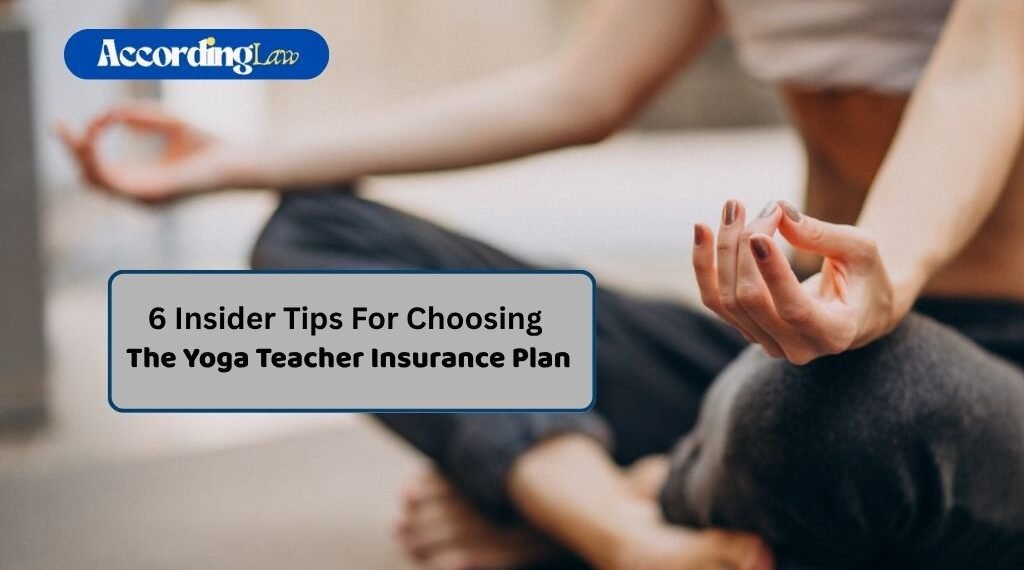Teaching yoga isn’t just conveying a class through poses; it is holding space. You are creating a space for a person to feel free to move, breathe, and release.
But while you help protect the well-being of others, who is protecting yours?
Whether you’re teaching from your living room, rented studio, or at the beach at sunrise, things can happen. Someone may injure themselves during your class. You may have claims against you for bodily harm. You may have claims against you that have nothing to do with instructional teaching. Without insurance, the worst of all situations will not only be stressful, but it could cost you thousands of dollars.
This is why yoga insurance is not to be taken lightly. And, with so many plans available, how do you know which plan is reflective of the way you teach? What do you need to look out for? How do you keep yourself from falling prey to common traps?
Let’s explore the topic of yoga insurance with six tips that go beyond the basics.
Table of Contents
1. Prioritize General and Professional Liability Coverage
Not all yoga accidents are the same. Some accidents are directly related to your instruction (such as when a student pulls a muscle following your instruction), and others are a bit more broad – think slips, trips, and falls, or equipment-related incidents.
These are exactly why general and professional liability is essential.
General liability insurance will cover incidents that happen in the teaching space, whereas professional liability will cover you if the instruction is cited for the injury. Without coverage, you’re looking at a potential huge financial exposure.
When choosing yoga teacher insurance, look for a policy that automatically includes the two that complement each other, and doesn’t have unknown risk categories, inflated rates, or hidden fees for each upgrade.
2. Look For Instant Proof of Insurance
If you’re renting rooms, collaborating with studios, or applying to run retreats, you will need to provide your insurance certificate upfront. Waiting several days or tracking somebody down for documentation can slow down bookings and even cost you teaching jobs.
A good insurance provider will issue instant proof of coverage immediately after you buy the insurance policy. This includes a downloadable certificate that you can send to the venue manager/studio owner/event organizer right away.
Make sure you have a policy that allows this type of “instant” access without an added process time.
3. Make Sure It Covers You Wherever You Teach
Yoga is no longer always taught in a traditional studio. You might be working from home, meeting clients where they are, offering classes in parks, or using pop-up events in local gyms. You should be covered for that mobility.
Some plans only offer coverage at a fixed address or charge an additional fee for off-site teaching. Look for one that will provide coverage if you teach from your home, outside, in a rented space, or at multiple venues.
When in doubt, check the policy for a clear indication that it provides coverage for multi-location or mobile teaching. Doing so will help your practice grow with peace of mind, not second-guessing whether your policy can keep up.
4. Check If It Includes Free Additional Insured Certificates
Many venues will ask to be an “additional insured” on your policy. It is a common ask to shift some responsibility away from themselves onto your coverage. Some insurance companies will charge you an additional fee every time you ask for one; others will be bundled at no cost. You want the latter.
Find a provider that will issue unlimited additional insured certificates at no additional fee, so you aren’t paying for paper all the time. This is handy if you are teaching at more than one place or if you run several short-term events and workshops.
5. Understand What Activities Are Actually Covered
Not every yoga instructor teaches the same way, using traditional hatha or vinyasa classes. You may teach breath work, meditation, restorative, or fusion styles like aerial or yoga sculpt. The problem is that not all insurances will agree to allow these variations.
Before you buy a policy, make sure to read the fine print about what is included.
Does it cover every modality you are teaching?
Will it cover you if you start something new next year?
The best policies address this, in simple terms, not the fine print with clunky terminology that could put you in a pickle when you are making a claim later.
6. Don’t Skip Product and Equipment Coverage
Regardless of whether you sell yoga mats, herbal teas or branded clothing, selling physical products – even as a side hustle – creates risk for product-related claims. Similarly, if you use props such as straps, blocks, or bolsters in a yoga class, it’s possible these could be linked to a client’s injury.
That’s why there is product and equipment liability.
Product and equipment liability is often forgotten about, but it’s valuable insurance. Choose a policy that will provide you coverage as an instructor and small business owner – your policy must cover damages associated with the products you sell or use, so that your entire practice (not only the classes) is protected.
Conclusion
Choosing the right yoga teacher insurance plan isn’t just a checkbox; it is a safety net that allows you to concentrate on what matters your teaching, your students, and your development.
Whether you are teaching sunrise flows by the beach, building a community in the online space, or doing private sessions, the right insurance should reflect the way you show up as an instructor. This means understanding what is included, where you are covered and avoiding unpleasant financial surprises hidden in the finer details.
When you are covered, you are freer to move and that clarity will be reflected in your practice. So, take your time, ask the right questions and ultimately, select a plan that has your back.


